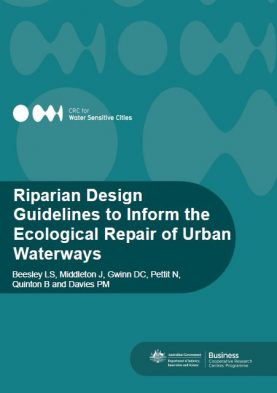Riparian design guidelines to inform the ecological repair of urban waterways
Riparian zones, the strips of land that run adjacent to streams and rivers, support an array of ecological processes important for healthy, well-functioning waterways.
There is a strong incentive to manage and protect riparian zones because repairing a relatively small tract of land can deliver disproportionally large benefits, and because many restoration actions, such as revegetation, are simple and affordable. While research continues on such benefits in urban landscapes, guidance is needed now to assist managers forging ahead with repairing urban riparian zones.
To assist managers in their decision-making process, the attached guidelines synthesise what is broadly known about riparian zones, and apply that knowledge to an urban context. The report identifies 10 ecological processes performed by riparian zones, how these processes are stressed by urbanisation, and how they can be repaired. It also presents a management framework with guidance on which on-ground actions can be prioritised given the natural and urban setting of a restoration site.
Please note: these guidelines are designed to assist site-based restoration. Managers wanting to undertake landscape-scale protection and restoration of urban waterways are encouraged to use other resources.
